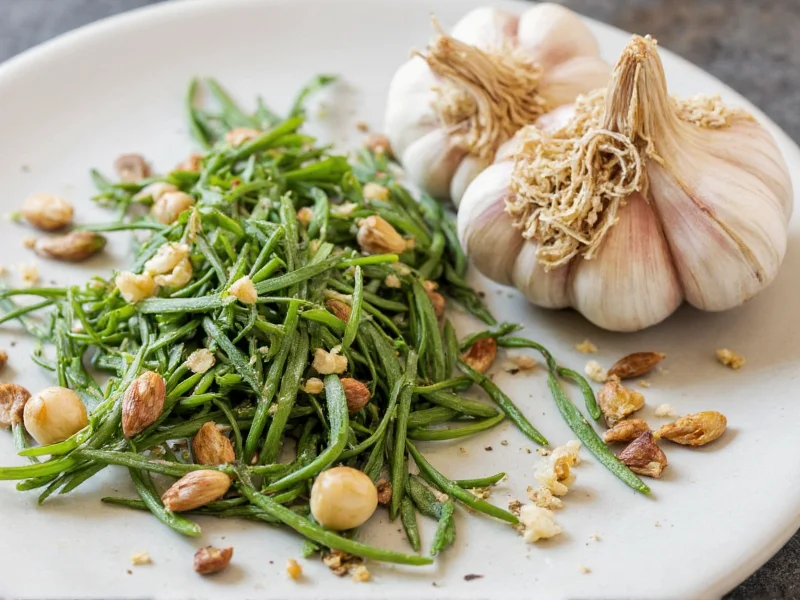Understanding the distinction between garlic and traditional herbs is essential for both home cooks and culinary professionals. While garlic shares many functional characteristics with herbs in the kitchen, its botanical classification places it in a different category altogether. This comprehensive guide explores why garlic isn't technically an herb, how it functions similarly to herbs in culinary applications, and how to best utilize this versatile ingredient.
Botanical Classification: Why Garlic Isn't Technically an Herb
From a botanical perspective, garlic (Allium sativum) belongs to the Allium family, which includes onions, leeks, and shallots. True culinary herbs are typically the leafy green parts of non-woody plants, such as basil, parsley, cilantro, and mint. Garlic, however, grows as a bulb underground, making it a vegetable rather than an herb.
The confusion between garlic and herbs stems from how we use garlic in cooking. Unlike most vegetables that serve as primary ingredients, garlic functions as a flavoring agent similar to how we use herbs. This culinary role explains why many people searching for is garlic considered an herb find themselves confused by conflicting information.
How Garlic Functions Like Culinary Herbs
Despite its botanical classification, garlic serves many of the same purposes as traditional herbs in cooking. Understanding this distinction helps clarify the difference between garlic and herbs while recognizing their similar culinary applications:
| Characteristic | Traditional Herbs | Garlic |
|---|---|---|
| Primary culinary role | Flavor enhancement | Flavor enhancement |
| Typical usage amount | Small quantities for flavor | Small quantities for flavor |
| Preparation method | Chopped, minced, or whole leaves | Minced, crushed, or sliced cloves |
| Flavor contribution | Aromatic, distinctive notes | Pungent, savory depth |
| Heat sensitivity | Varies (some delicate, some robust) | Loses pungency when cooked |
Culinary Applications of Garlic as a Flavoring Agent
When exploring the culinary uses of garlic, it's important to understand how its flavor profile develops under different cooking conditions. Raw garlic delivers a sharp, pungent bite that mellows significantly when cooked. This transformation makes garlic incredibly versatile across various cooking techniques.
Professional chefs often employ specific techniques to maximize garlic's flavor contribution while avoiding bitterness:
- Raw applications: Finely minced in vinaigrettes, aiolis, and fresh salsas where its sharpness provides brightness
- Sautéing: Added to warm oil (not hot) to gently release flavors without burning
- Roasting: Whole heads roasted to develop sweet, caramelized notes
- Infusing: Steeping in oils or vinegars to create flavored bases
Understanding these techniques addresses the common question of garlic as seasoning instead of herbs and helps home cooks achieve professional results.
Growing Garlic: Similarities and Differences from Herb Gardening
Many gardeners interested in growing garlic like herbs discover that while the cultivation process shares some similarities, there are important distinctions. Garlic requires specific planting times (typically fall for most varieties), grows underground as a bulb rather than above ground as leafy plants, and has a longer growth cycle than most annual herbs.
Successful garlic cultivation depends on:
- Well-drained soil with ample organic matter
- Proper planting depth (approximately 2 inches)
- Adequate spacing between cloves (6-8 inches)
- Cold period for proper bulb development
- Timely harvesting when lower leaves begin to yellow
These requirements differ significantly from typical herb gardening, explaining why the question why is garlic not an herb extends beyond culinary usage to cultivation practices.
Substituting Garlic When Needed
When considering garlic substitute for herbs options, it's important to recognize that no single ingredient perfectly replicates garlic's unique flavor profile. However, depending on the specific culinary application, several alternatives can provide similar flavor dimensions:
- Asafoetida (hing): A resin with strong sulfurous notes, used in small quantities in Indian cuisine
- Garlic-infused oil: Provides garlic flavor without raw pungency
- Shallots or onions: Offer milder allium flavors when garlic is unavailable
- Chives: Provide a mild onion-garlic flavor in fresh applications
Understanding these substitutions helps address dietary restrictions or ingredient availability issues while maintaining the intended flavor profile of dishes.
Common Misconceptions About Garlic and Herbs
Several persistent myths surround garlic's classification and usage. Clarifying these helps cooks better understand this essential ingredient:
- Myth: Garlic is an herb because it's used like one
Fact: Botanical classification depends on plant structure, not culinary usage - Myth: Roasted garlic loses all nutritional benefits
Fact: While some compounds change, roasted garlic still offers significant health properties - Myth: More garlic always means better flavor
Fact: Overuse can dominate a dish and create bitterness when burned
Recognizing these distinctions addresses the core question behind searches for botanical classification of garlic while providing practical cooking insights.
Practical Tips for Using Garlic in Everyday Cooking
Mastering the garlic in cooking techniques can transform your dishes from ordinary to exceptional. Consider these professional tips:
- Timing matters: Add garlic later in the cooking process for stronger flavor, earlier for milder notes
- Preparation affects intensity: Crushing creates more pungent flavor than slicing
- Storage impacts quality: Keep unpeeled bulbs in a cool, dark place for longest shelf life
- Freshness test: Firm, plump cloves indicate peak quality; avoid sprouting or soft cloves
These practical guidelines help bridge the gap between understanding garlic's botanical nature and applying that knowledge to create delicious dishes.











 浙公网安备
33010002000092号
浙公网安备
33010002000092号 浙B2-20120091-4
浙B2-20120091-4